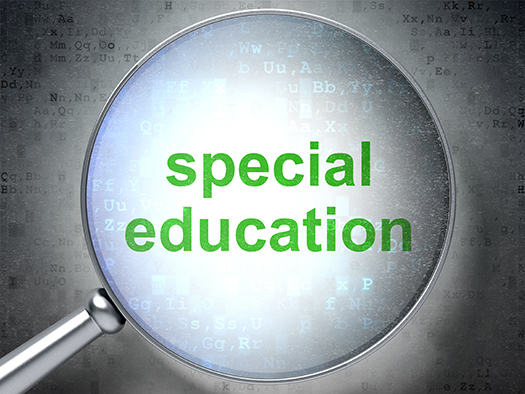A new multivolume report provides a national picture of secondary school students in special education and examines how they compare with their peers. The research sheds light on challenges youth can face in socioeconomic status, health, communication, and social functioning at school. It also looks at other areas, such as academic supports and preparation for life after high school.
“This study provides a comprehensive, updated picture of students who receive special education services in the United States,” said Mathematica Policy Research Senior Researcher Stephen Lipscomb, who led the analysis for these two reports. “The findings can help schools address the challenges these youth face given our nation’s changing educational, social, and economic landscape.”
Policymakers have long recognized the importance of addressing the needs of these students, who today account for 12 percent of all youth in the United States. Mathematica is conducting the research, called the National Longitudinal Transition Study 2012, for the U.S. Department of Education's Institute of Education Sciences to examine the characteristics and experiences of secondary school students who receive special education services under the Individuals with Disabilities Education Act.
The study examines two distinctive groups: (1) youth identified as needing special education services under the Individuals with Disabilities Education Act (that is, those with an Individualized Education Program [IEP]), and (2) youth without an IEP. Those with an IEP include 12 different disability groups. Those without an IEP include some youth with an impairment that does not qualify them for special education, but enables them to receive accommodations under section 504 of the Rehabilitation Act, another federal law pertaining to youth with disabilities.
The first volume looks at characteristics of youth in special education overall and how they fare relative to their peers without an IEP. The findings highlight distinctive characteristics and experiences of youth with an IEP.
Key Findings from Volume 1
- Youth with an IEP are more likely than their peers to be socioeconomically disadvantaged and to face problems with health, communication, and completing typical tasks independently.
- The vast majority of youth with and without an IEP feel positive about school, but those with an IEP experience bullying and suspension at higher rates, and are less engaged in school and social activities.
- Youth with an IEP are more likely than other youth to struggle academically, yet less likely to receive some forms of school-based support.
- Youth with an IEP lag their peers in planning and taking steps to obtain postsecondary education and jobs.
- Youth with a 504 plan face fewer functional, social, and educational challenges than do youth with an IEP, but more than other youth without an IEP.
The second volume describes the characteristics of youth in 12 disability groups and how they fare relative to one another. The disability groups are autism, deaf-blindness, emotional disturbance, hearing impairment (which includes deafness), intellectual disability, multiple disabilities, orthopedic impairment, other health impairment, specific learning disability, speech or language impairment, traumatic brain injury, and visual impairment. The findings highlight the diversity of needs and challenges faced by youth in special education.
Key Findings from Volume 2
- Youth with autism, deaf-blindness, intellectual disability, multiple disabilities, and orthopedic impairments are most at risk for not transitioning successfully beyond high school.
- Youth with intellectual disability and emotional disturbance are the most socioeconomically disadvantaged groups and the most likely to attend lower-performing schools.
- Youth with autism, intellectual disability, and multiple disabilities are most likely to receive academic modifications but least likely to receive some other forms of academic support.
- Youth with emotional disturbance are the most likely disability group to be suspended, expelled, arrested, and bullied.
In 2012 and 2013, the research team conducted surveys of about 13,000 parents and 11,000 youth when most youth were 13 to 21 years old. They chose these students to represent all students with and without an IEP in the United States in grades 7 to 12, as well as from each disability group, those with a 504 plan, and those with no identified disability.


